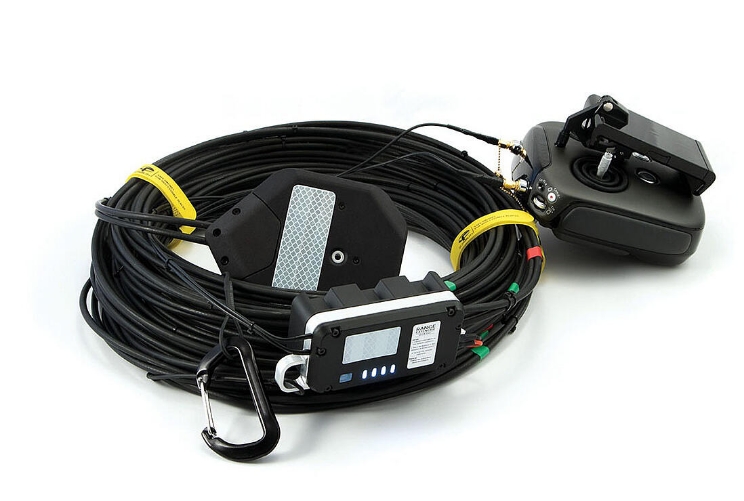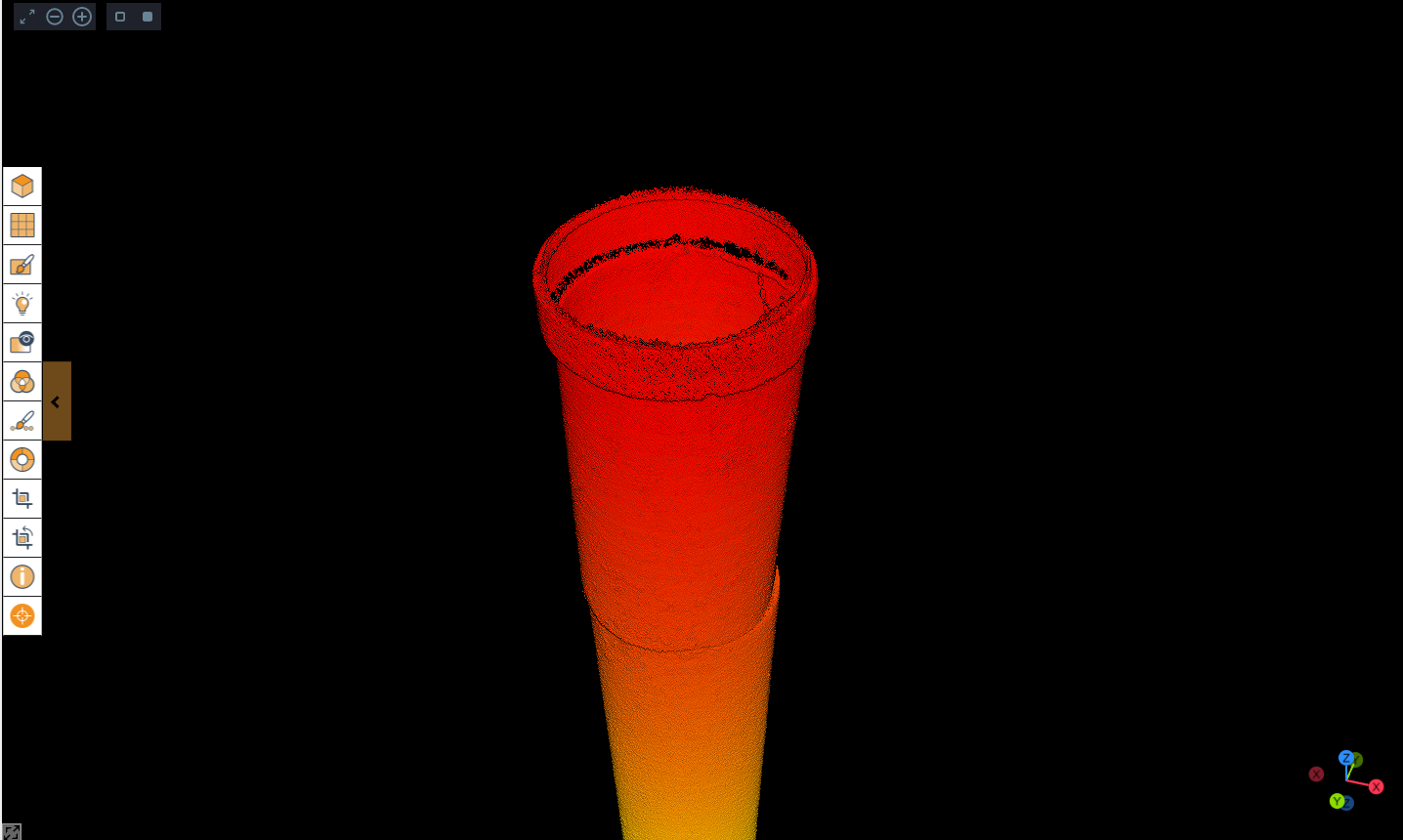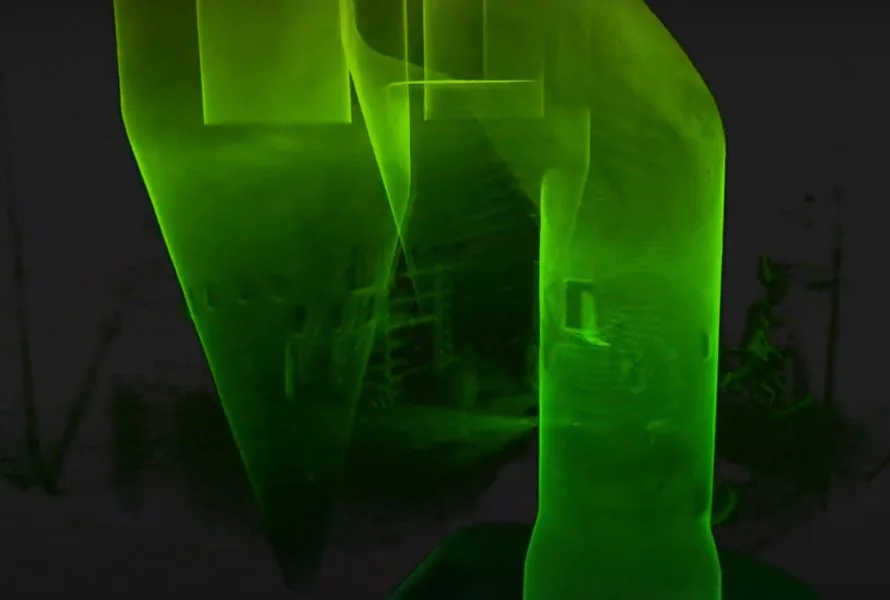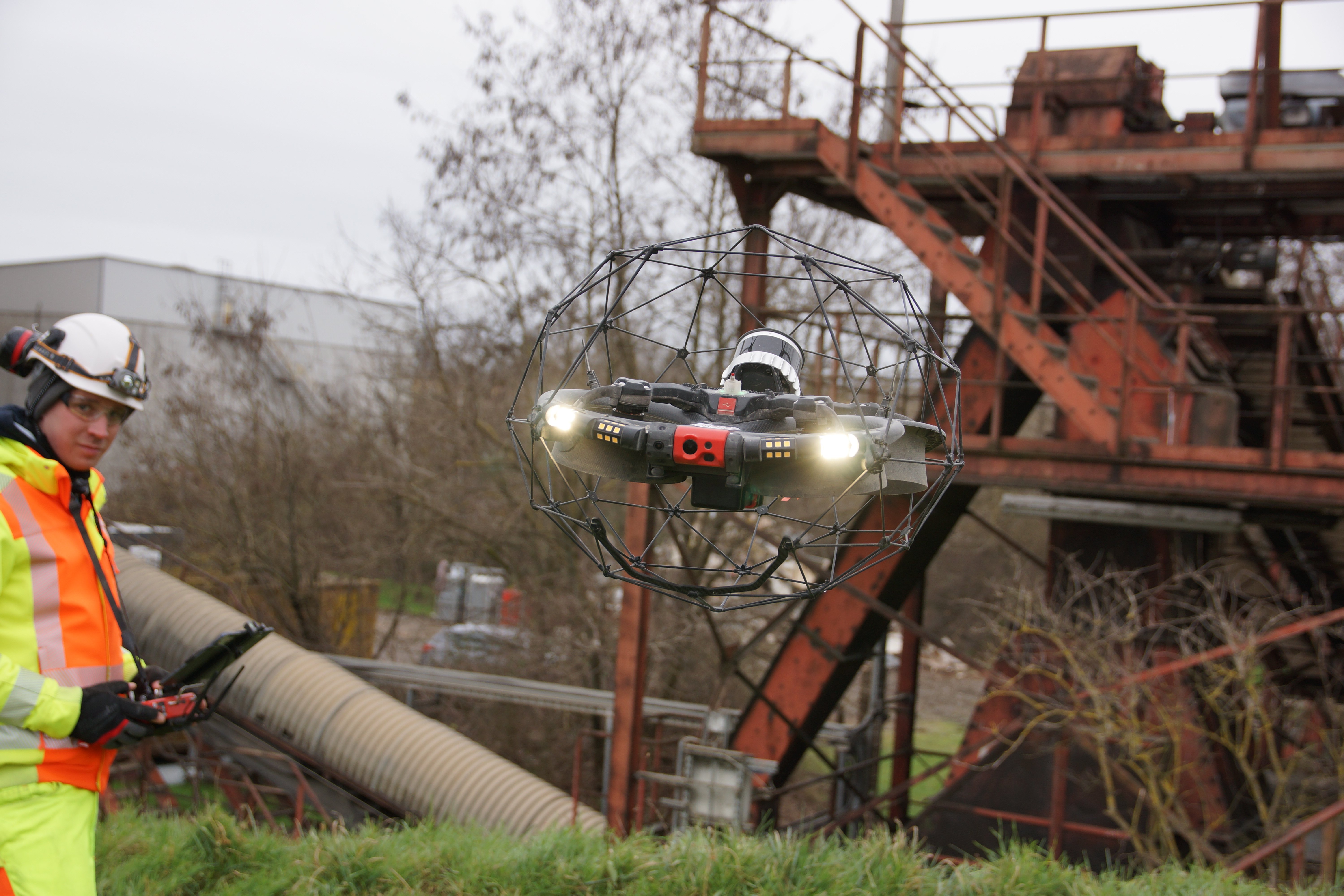
Human inspections in confined spaces are risky and difficult
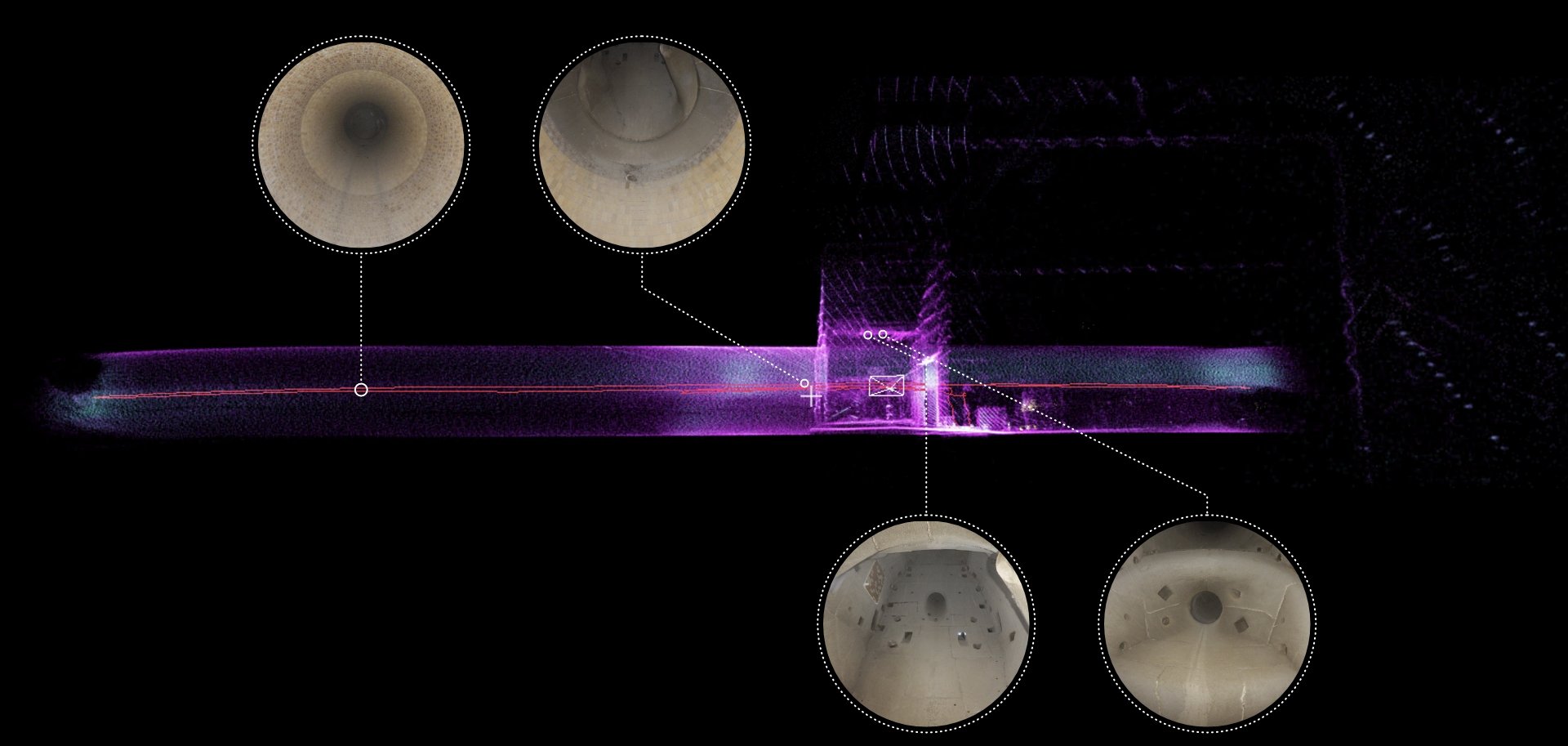
3D model of a kiln showing the drone trajectory and the localization of the POIs recorded during the mission.
3D model of a kiln showing the drone trajectory and the localization of the POIs recorded during the mission.
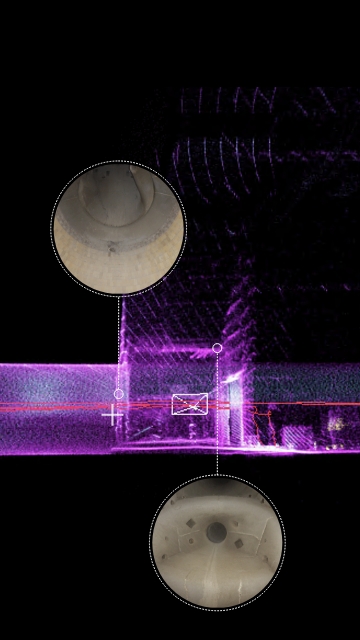
THE PLANT OF TOMORROW
Discover how Holcim uses Flyability indoor drones to create the plants of the future

Improved Safety
Protect workers from hazards by using drones to enter hazardous confined spaces such as silos, kilns or cyclones.
Reduced costs
Reduce downtimes required for inspections by cutting preparation time, post-work cleanup, and confined space entry procedures.
Enhanced efficiency
Increase the frequency of inspections & improve predictability for tasks related to shutdown planning.
APPLICATIONS
Proven application fields in the cement industry
Structural integrity analysis
Detect cracks, anomalies, or unusual areas of wear that could compromise structural integrity and safety.
Preventive maintenance
Spot vulnerabilities to stay ahead of breakdowns and outages by addressing defects before they turn into larger issues.
Access the inaccessible
Enable evaluation of structures that are traditionally not inspected due to cost and safety reasons (e.g. ducts).
Indoor stockpile measurment
Provide prompt and accurate stockpile inventory using LiDAR data collected indoors.
IN ACTION
Succeed at performing complex missions一no matter the dust
ELIOS 3 embedded LiDAR constantly scans the surroundings to build a real-time 3D view of the drone’s environment and trajectory. The drone’s position is located precisely and the pilot can instantly assess the inspection coverage一even in high dust environments.
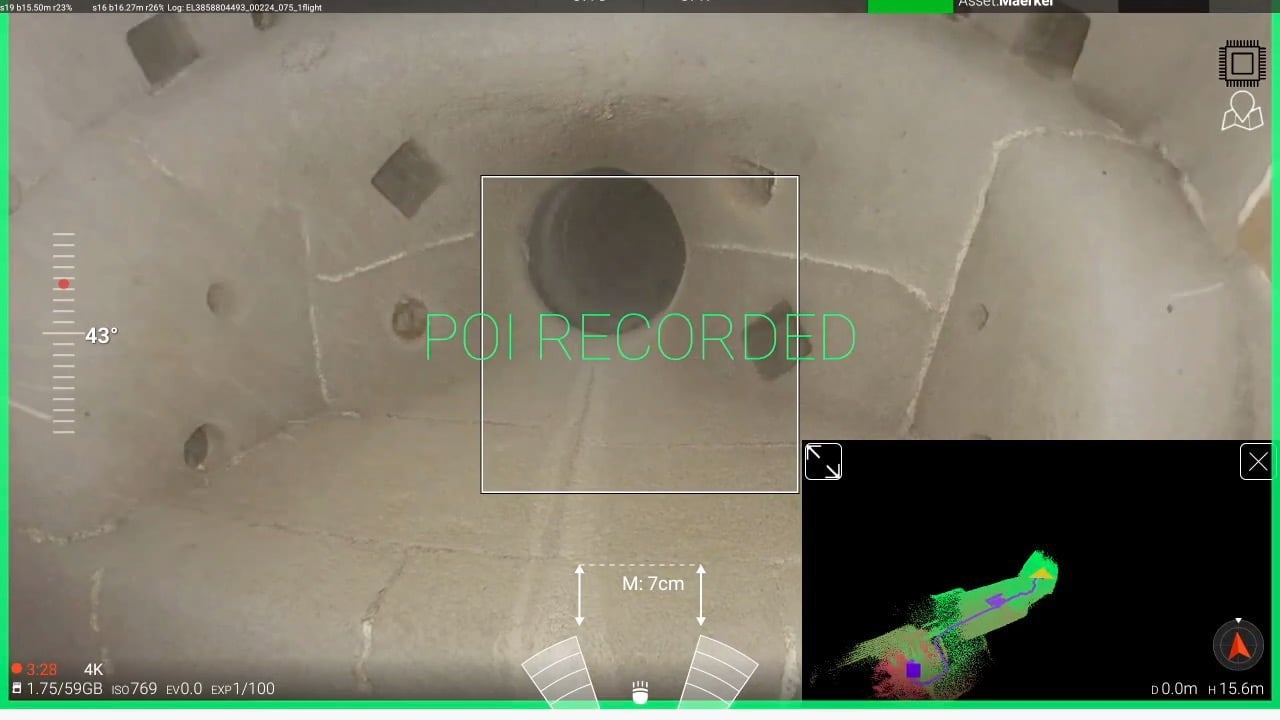
| Safety | Preventive maintenance | Cost efficiency |
| Check the integrity of the structure before sending in humans. | Identify cracks during quick shutdowns & plan for appropriate maintenance. | Proceed with small repairs before the issues get bigger. |
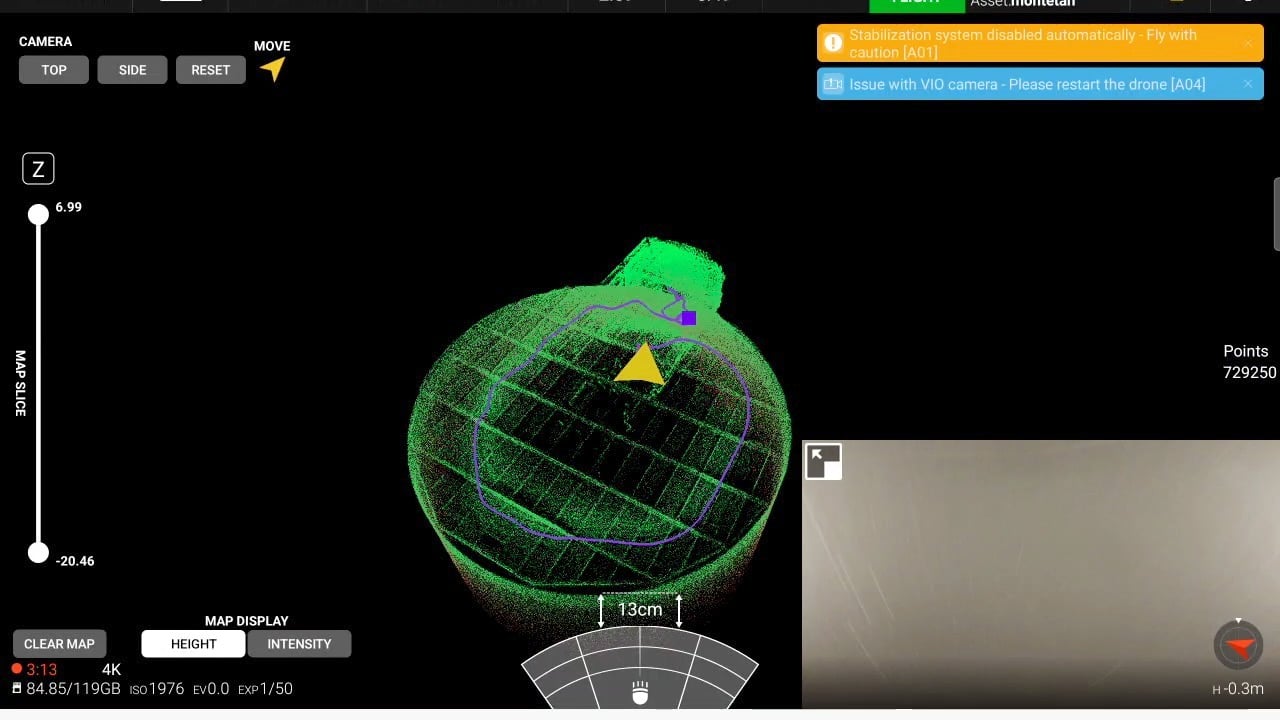
After cleaning operations, use a drone to spot for potential structural issues and plan for appropriate maintenance. Look for signs of corrosion cracking or peeling in the rooftop coating. Inspect the walls to detect buildups that could indicate asymmetric flow and/or represent a danger for people entering later with rope access.
| Safety | Speed | Cost efficiency |
| No confined space entry | 15 min inspection process | +80% cost reduction vs. traditional methods (from reducing downtime) |
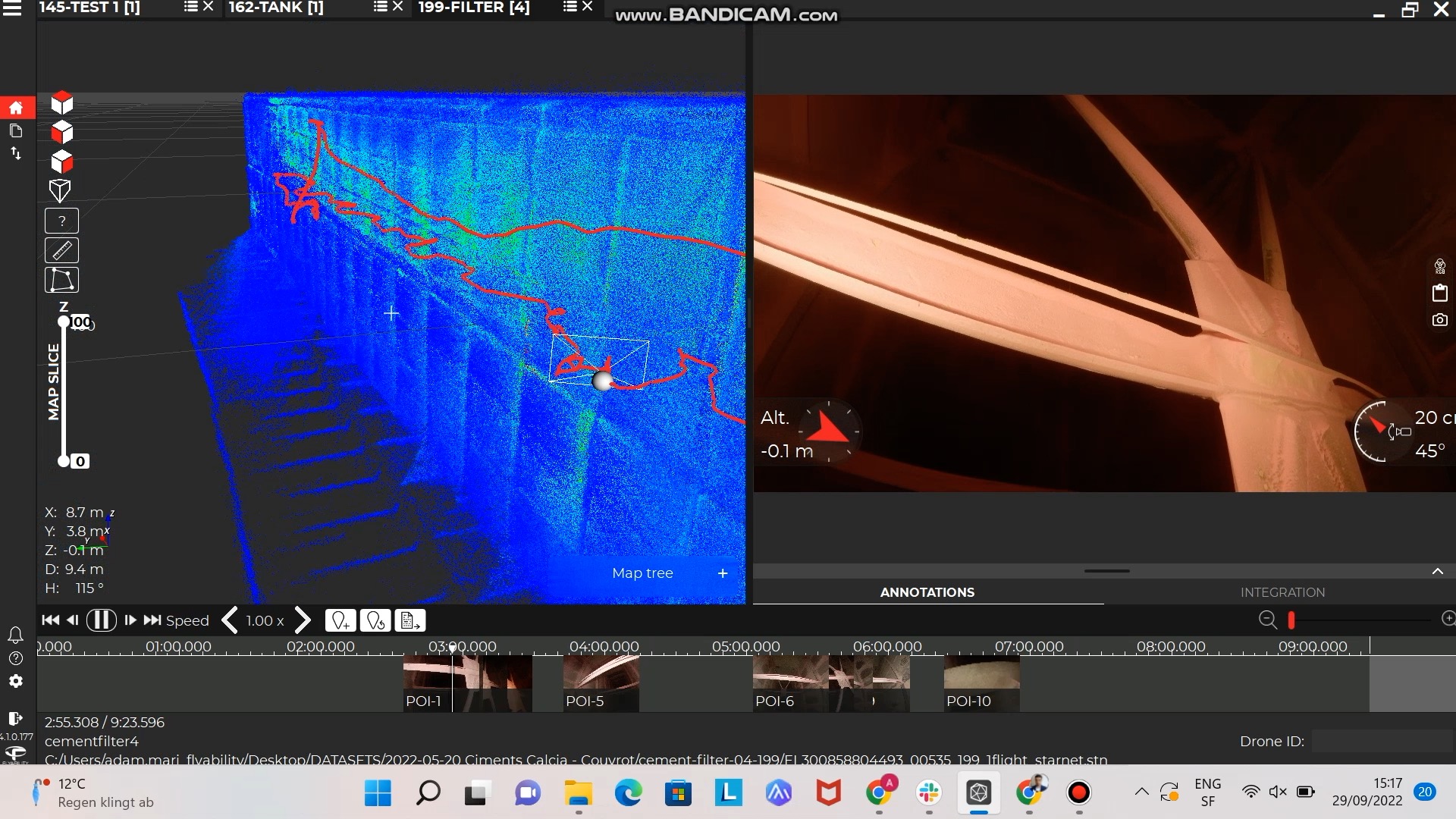
Quickly deploy a drone inside a cement filter to locate defects and rapidly plan for repairs.
Once a mission is complete, import the data collected into Inspector 4, our companion software, and start analyzing your flight一frame by frame.
| Safety | Speed | Cost efficiency |
| No human entry | Data captured with the Elios 3 in only one flight (<9min) | 2h downtime vs 2 full days using the traditional inspection methods |
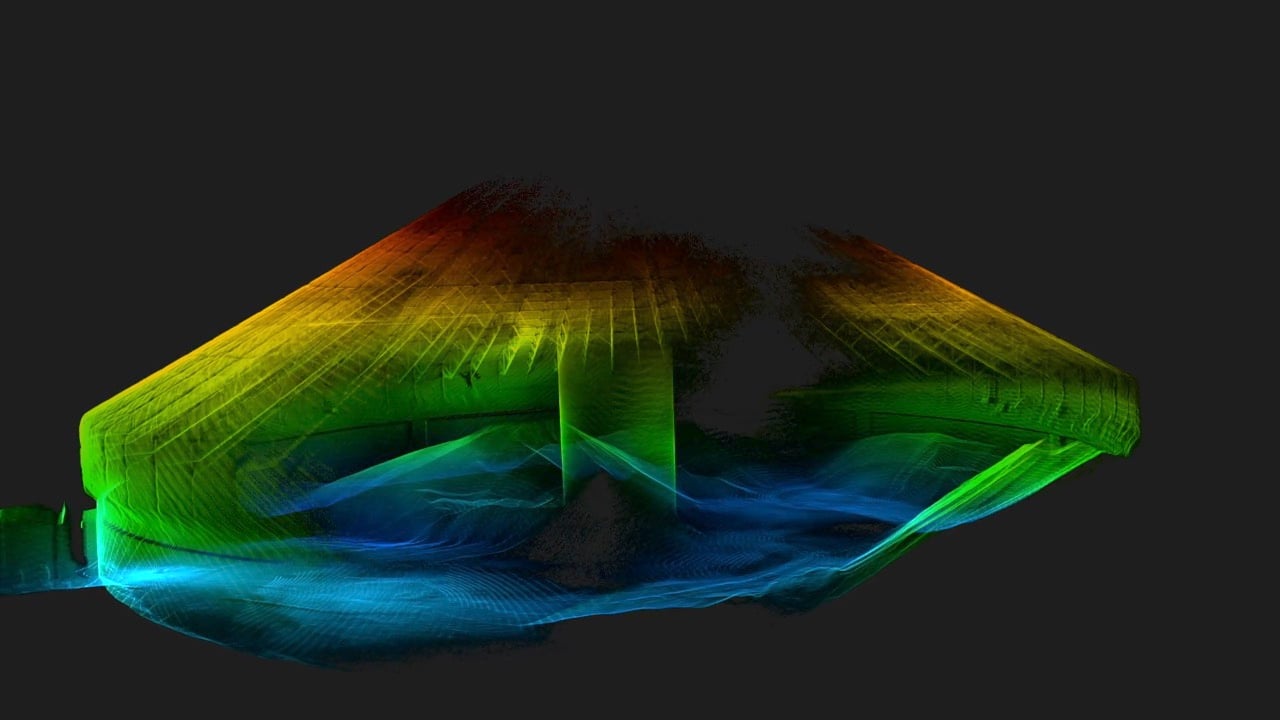
Use Elios 3 LiDAR data to map indoor stockpiles in only one flight ensuring efficient and compliant stock management—even in the biggest silos.
| Safety | Speed | Accuracy |
| No work at height | 9 minutes data collection process | Highly accurate volume measurement |
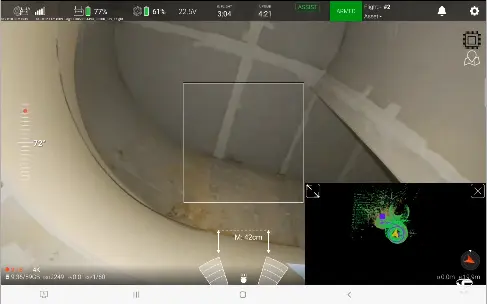
Assess the general condition of a cyclone and take note of wear areas, damages, indications of loose material, and air leaks. Thanks to the 3D Live Map, ensure you get full coverage inside the asset.
| Safety | Speed | Cost efficiency |
|
No human entry. Visual inspections are performed remotely, from a safe distance |
4h inspection process |
+90% cost reduction vs traditional methods (from eliminating scaffolding) |
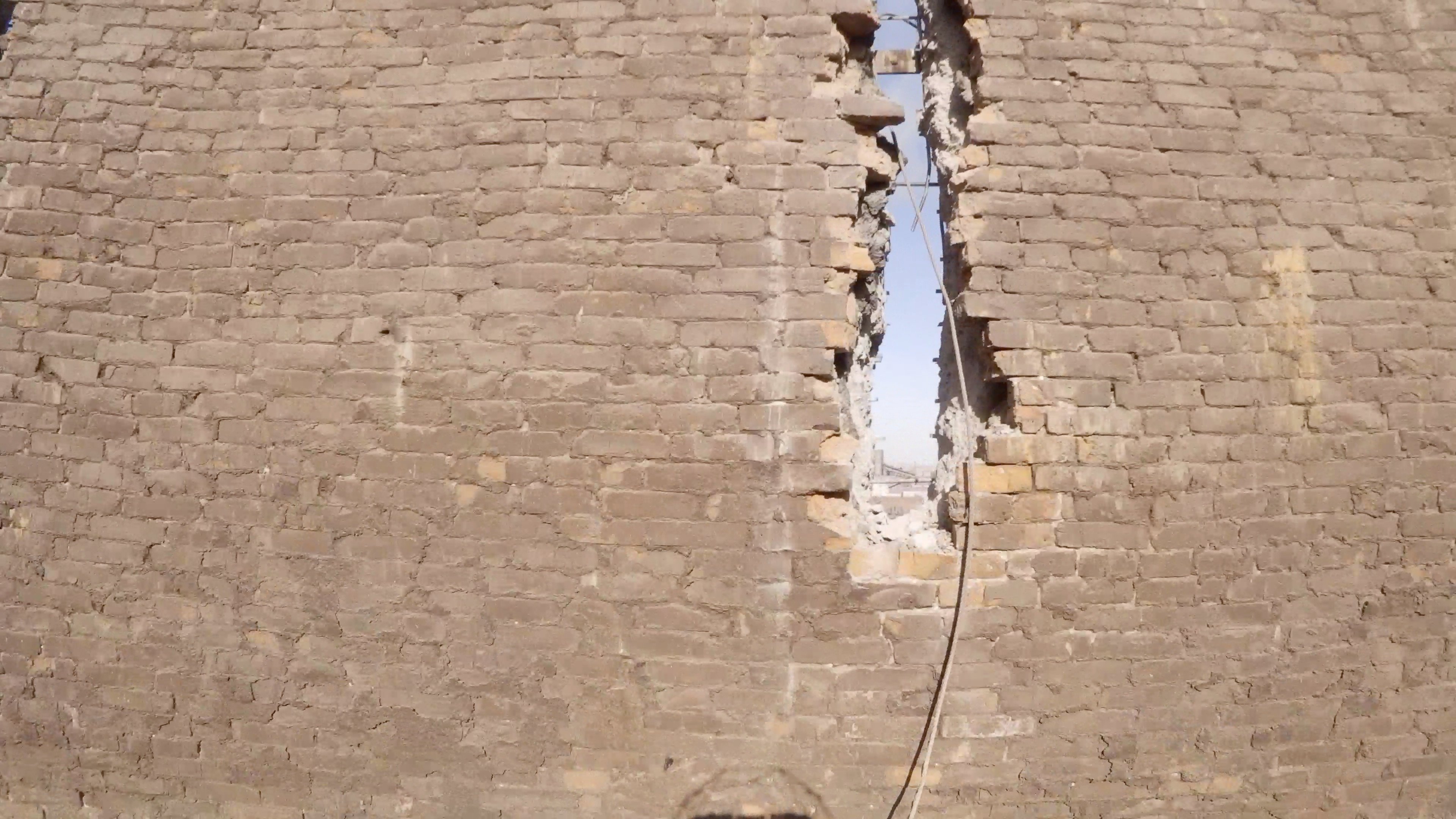
Quickly identify cracks, missing bricks, and other defects on the inside of a tall-high chimney. Use 3D LiDAR data to precisely locate the anomalies and monitor their evolution over time.
| Safety | Speed | Cost efficiency |
| No human entry. | <1h for a visual inspection | +90% cost reduction vs. traditional methods (from labor cost) |
Related Products
Elios 3
Indoor drone for inspection, mapping, and surveying
Relying on the power of computer vision and LiDAR mapping, Elios 3 allows users to get full operational clarity inside industrial assets building a real-time 3D view of the drone’s environment and trajectory一even in high dust environments.
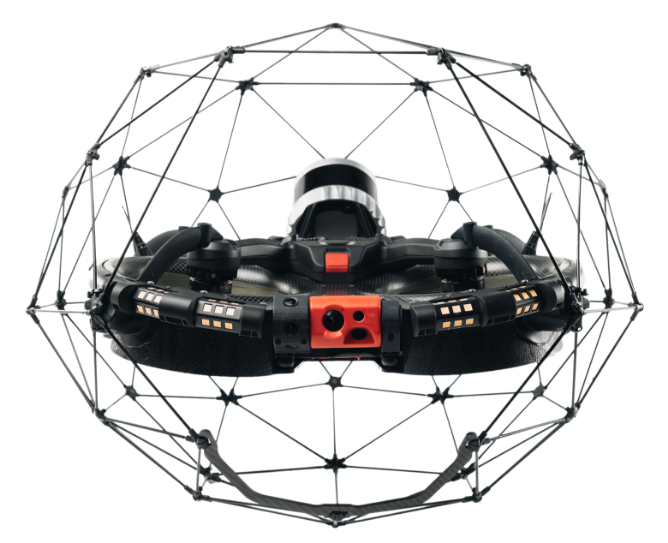
TESTIMONIALS
What our customers say about Elios
"The drones for us are very important. It starts with health and safety. These drones are helping our people perform their work better. And we love to make sure that our people go home safe and in the same state as when they joined us at work that day."
Global Head of Plant of Tomorrow at Holcim
Capex Manager US Manufacturing Support at Holcim
CASE STUDIES
Learn how cement plants are using indoor drones on the field
Learn More
Interested to learn more?
Subscribe to receive more stories about Flyability drones in the Cement industry.
Frequently Asked Questions
In order to operate a drone, do you have to be an engineer, an NDE inspector or a piping inspector?
No, it is not required but you should always be aware of the regulations concerning commercial drone operations in your area before flying). Piloting Elios drones is accessible to everyone who has completed the introductory training. Traditionally our clients work in teams of two when running inspections, one pilot and one inspector who can analyze the data on the spot. With this approach, each person can focus on their area of expertise.
How do I train my team?
Flyability has put in place a complete certification and training program that takes drone pilots from discovering the particularities of piloting a drone indoors BVLOS (Beyond Visual Line of Sight), to being able to perform the most difficult indoor inspection missions. The certification tests the pilots on their ability to assess the difficulty of a mission and puts their own piloting skills into perspective. Our training courses are defined and provided by professional pilots with extensive mission track records using Elios drones. Every bit of theory you will learn is backed-up by practical exercises directly applicable to your everyday job as a pilot. Operators following our training courses receive a valuable professional certification, acknowledging their proficiency at using Elios drones.
Do I need to adapt my Standard Operating Procedures?
Asset owners are responsible for deciding whether to modify their SOPs to accommodate the use of drones. Nevertheless, SOPs provide a method to communicate the process changes to employees. As they no longer rely on humans to enter confined spaces for inspection, most of our customers update SOPs to take the drone into consideration.
Can a drone be used as a formal inspection tool?
Several clients have conducted formal inspections using our products that have been approved by classification societies. You can read more about an example in this article: https://www.flyability.com/articles-and-media/can-a-drone-be-used-as-a-formal-inspection-tool
The thing to note is that drones can't permanently be recognized as a formal inspection tool, since inspectors are agnostic to specific tools. Rather, inspectors can approve a given tool in a specific inspection when they see the data it can produce.
How to process inspection data?
Once your mission is completed, you can simply connect Elios to your computer using the USB port fitted on the top of the drone to import all data in Inspector, our companion software.
After retrieving the flight data, you have immediate access to a high resolution point cloud of your assets that you can visualise in Inspector. You can then review your POIs and document your inspection by taking notes in the POIs, making measurements, and exporting your data as a report.
Does Flyability keep your data safe from cyber attack?
As long as the user does not manually connect to a WiFi network, there is no physical link between the Elios system and the internet—ensuring complete data safety.
In addition, Flyability only collects data in one instance: when the drone is armed while the tablet on the GCS is connected to the internet. In these cases, we collect the unit ID — which is encrypted and can only be read by Flyability —, the time of flight, and the firmware version. Operators are notified of this and have the option to opt-out.
For more information on the data safety, please consult the following link:
Cyber Security With Flyability Drones
Are drones intrinsically safe?
ATEX is the European certification given to equipment tested and approved to be intrinsically-safe.
The Elios drones are not ATEX rated / intrinsically safe. It is hardly possible for a drone to be intrinsically safe (none to date).
You will need to perform a procedure to neutralize the environment of the asset you want to inspect like you would do when doing a manned inspection. You still have a lot to gain when performing the inspection with a drone instead of a human. For example, you can use nitrogen to neutralize the asset and send in a drone right away. If you do the same for a manned inspection, the inspector would have to carry a breathing apparatus and you would need to deploy bystanders, which is much more complicated and dangerous.
For more information on this subject, please follow the link: https://www.flyability.com/articles-and-media/are-drones-intrinsically-safe
Can I fly Elios drones outdoors?
Flyability drones can fly outdoors in ATTI mode to inspect outdoor assets. However, it is not recommended to do so as it is much harder to control the drone in ATTI mode. This use case is reserved to experienced pilots only. Keep in mind that flying outdoors is subject to airspace regulations, unlike indoor flights.
Should I insource or outsource drone-based inspections?
It depends on your usage and the regulations in place. Some industries may require a qualified and certified inspector to perform an inspection. In case you would like to outsource, there are service providers that use the Elios drones all around the world.
For more information on outsourcing, consult the following links:
Insourcing versus outsourcing your industrial inspection drone program
Drone Inspections Insourcing vs Outsourcing Your Drone Inspection Program
What is the size of the smallest defect the Elios drones can spot?
With Elios 2 & 3, you can capture images with a Ground Sampling Distance of 0.18 mm/pixel when standing at 30 centimeters from the surface you inspect. With this accuracy, you can easily spot defects that are a few millimeters wide such as small cracking patterns in the walls or a hole inside of silos.
For more information on the resolution of the Elios 2 camera:
Drones Camera Resolution: Three Metrics You Should Know About
For more information on the types of data the Elios 2 can collect:
https://www.flyability.com/articles-and-media/data-capture-elios-2
Is dust a blocker for drone-based inspections in cement assets?
Industrial indoor spaces are often full of dust, which makes First-Person View aircraft navigation difficult. Elios drones feature a dust-proof lighting system that allows you to traverse dirty places without losing sight of your objective. And for the extreme cases, you can navigate inside assets relying solely on the live map created by LiDAR and displayed instantly in Cockpit.
Do I need extra light for silo inspection?
No. Elios drones lighting system carries up to 16 '000 lumens of light, adjustable to your needs. Elios 2 & 3 provides the right amount of lighting whether you need to see the big picture or the tiniest crack. When additional lighting is required to get further details and higher image quality during close up data capture, Elios 3 carries an additional close up light source providing direct light to the object of scrutiny.





